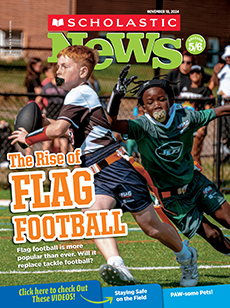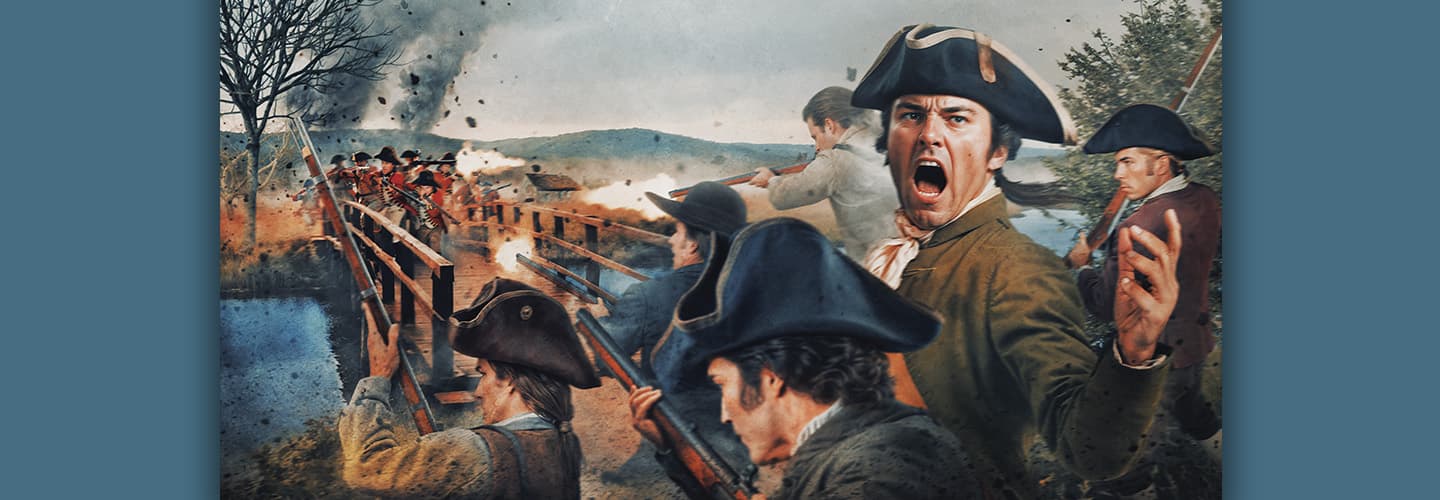To prepare for the possibility of war, the colonists had spent months gathering weapons and supplies in a town called Concord. On the night of April 18, about 700 British troops set out from Boston to destroy the stockpile of weapons. But colonial leaders had learned about the British plan and sent word to warn colonists in Lexington, Concord, and nearby towns (see “Midnight Riders”).
After the British victory at the clash in Lexington, the Redcoats were feeling confident as they marched on to Concord. After all, many of the colonial militiamen were farmers and shopkeepers. But the Redcoats were in for a surprise later that morning.
By then, hundreds of militiamen had gathered near Concord. The colonists had moved most of their weapons and supplies, but the British destroyed what they found. When the colonists saw plumes of smoke, they thought the entire town was burning.
Colonial fighters rushed to face off with the Redcoats who were guarding a bridge. The British opened fire. The colonists fired back in what came to be known as “the shot heard round the world.” As more men from neighboring towns joined the fight, the British became badly outnumbered.
At about noon, the Redcoats started to retreat back to Boston. During the long march, they were attacked by American militiamen hiding behind trees, walls, and buildings. By the end of the fighting, about 250 Redcoats had been killed or wounded. That was about three times the number of deaths and injuries the colonists suffered.

